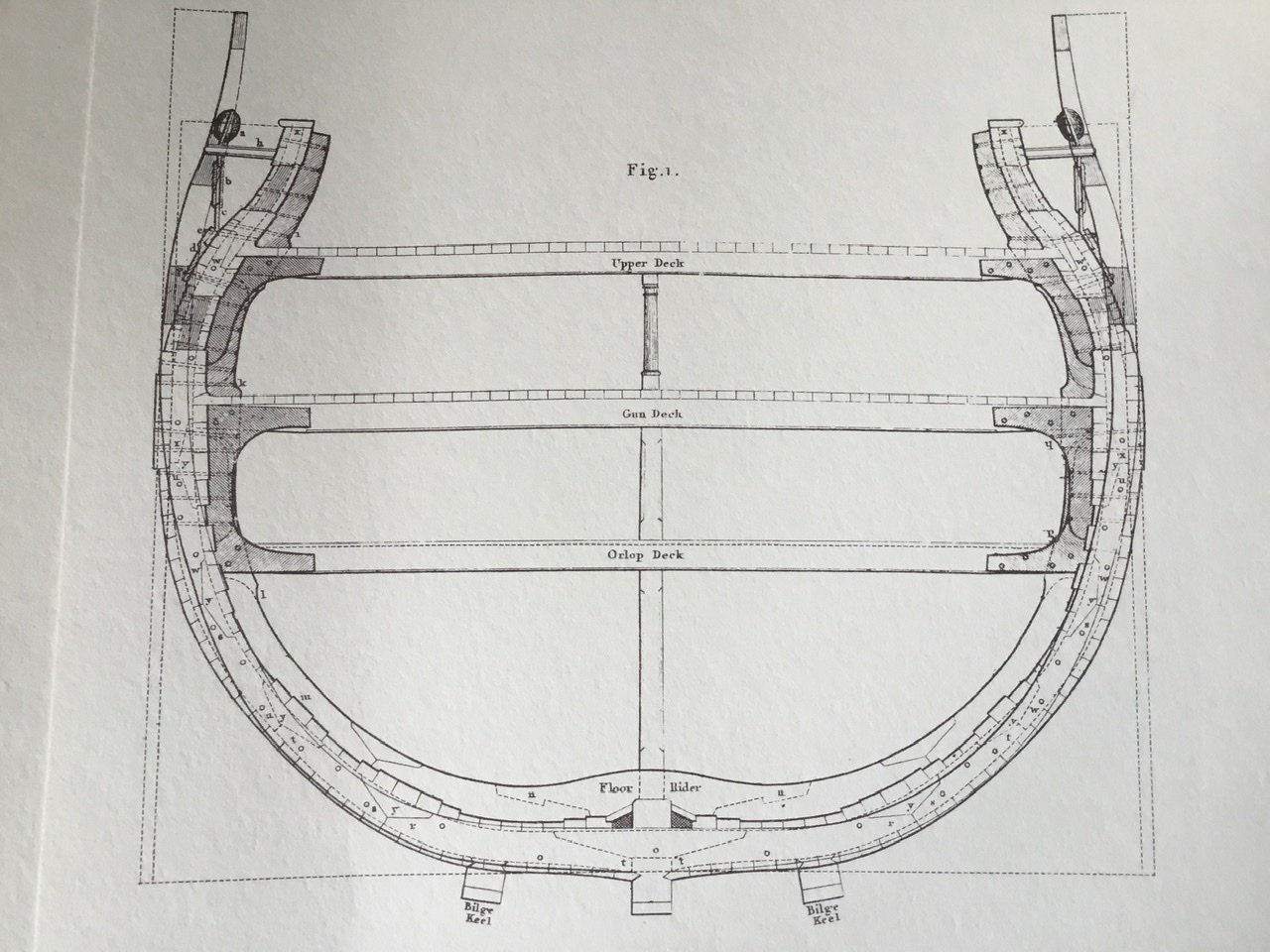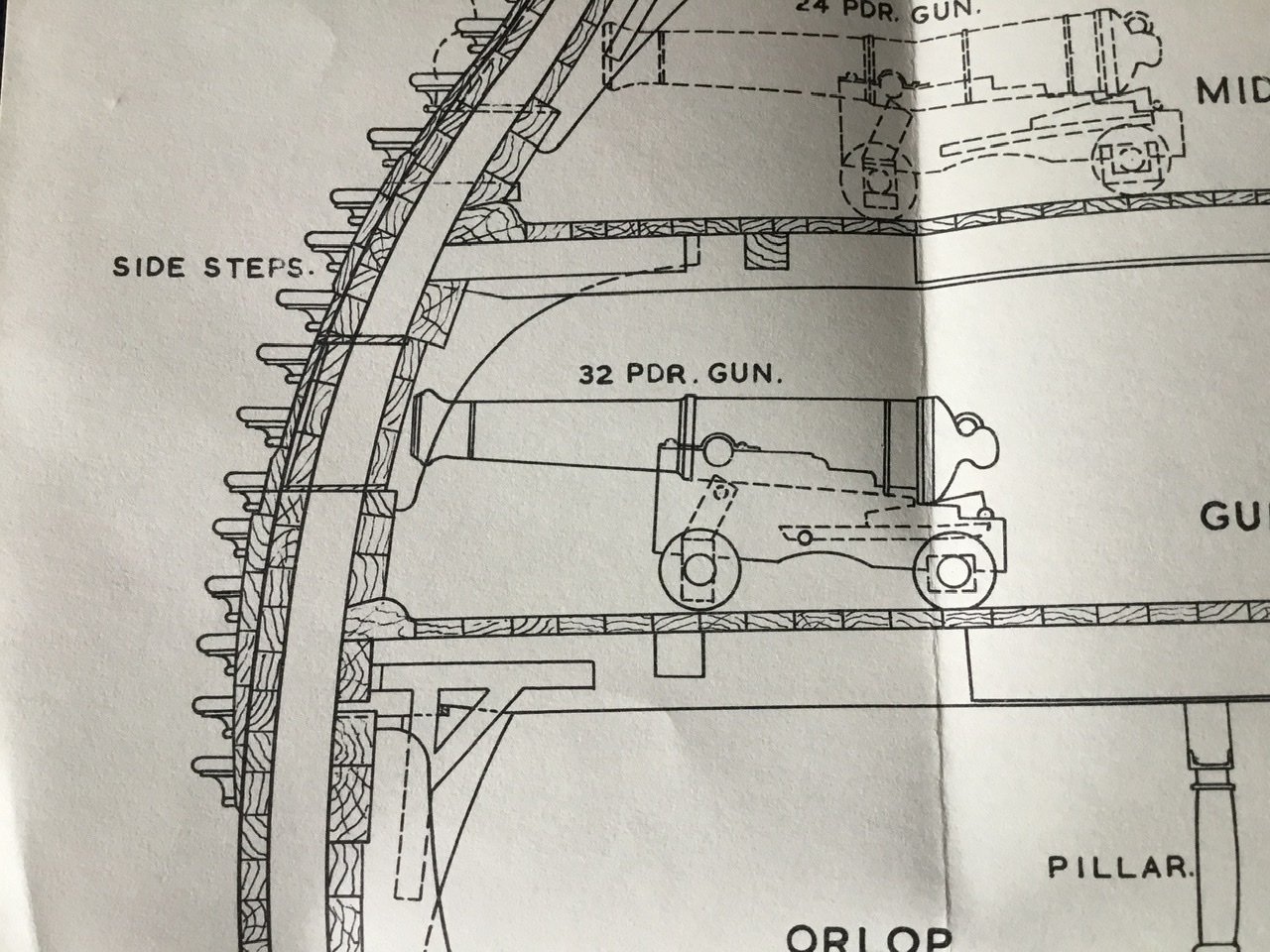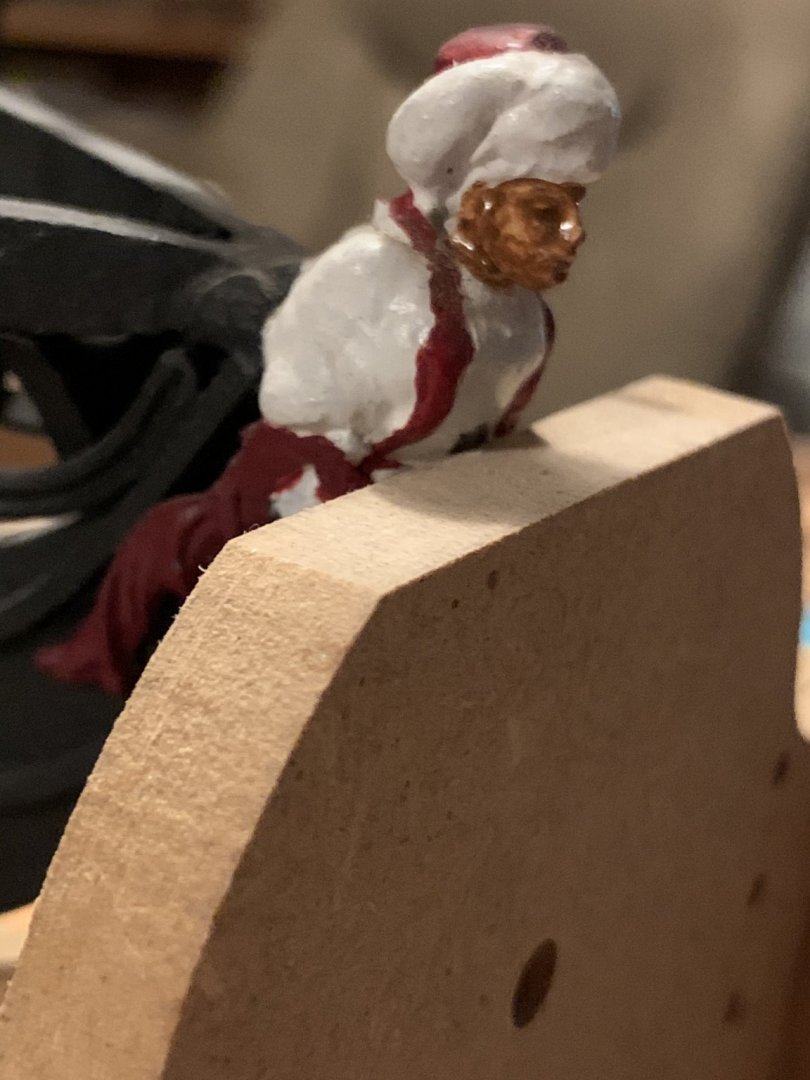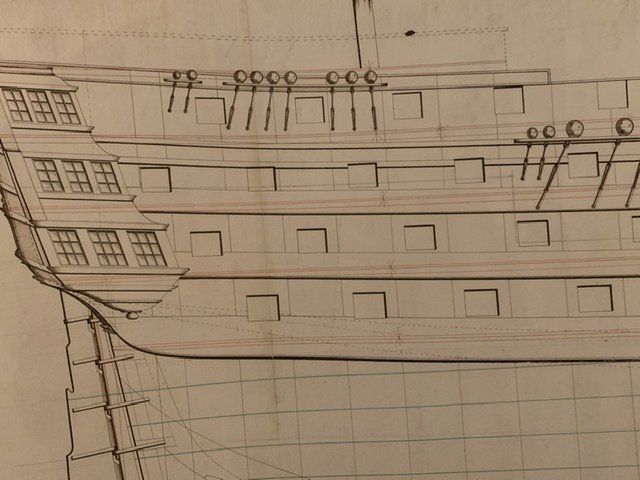-
Posts
546 -
Joined
-
Last visited
Content Type
Profiles
Forums
Gallery
Events
Everything posted by Morgan
-
Maybe the quality of materials is aligned to historical timeframe of the subject, for instance the Victory of Trafalgar is traditionally painted why would you plank with pear when you are covering it up, whereas the Victory of 1765 would look splendid if you used the Duchess colour scheme - I’m not advocating Victory it’s just one ship that changed of which we have many examples and can gauge how she looks in her different guises. For your proposed Frigates the Indefatigable with built up bulwarks would, in my book, look best in a painted format in keeping with her timeframe, whereas the other frigates in their earlier form lend themselves predominantly to natural wood. So perhaps anything pre 1800 go with the more expensive woods, anything after 1800 go with cheaper planking where it is to be painted. This is what you generally see in the NMM model collections. Gary
-
Perhaps the moderators can help you set up a poll to get a more in depth opinion from the forum, it’s hard to know from a few comments and exchanges. You have established a brand and quality / feel to the kits that go together, I would personally go with a stronger wood, but the cost may, as you indicate, disenfranchise people on larger kits, but you can also make the argument that on a larger kit if your going to spend the money why would you skimp. Customer survey required! Gary
-
You’d better weigh this thing so we can load test our work benches! 🤪 Gary
-
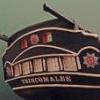
Proxxon DB250 mini wood lathe
Morgan replied to Jorge Hedges's topic in Modeling tools and Workshop Equipment
I brought a second bed direct from Proxxon (Code 27020-31) and mounted it and the lath end-on-end on some MDF. The bed cost €14.30 (+ postage) a couple of months ago, try your Proxxon dealer to see if they supply spares. Obviously not as good as a single piece extended bed, but it does the same job. Gary- 11 replies
-
- db250
- mini lathe
-
(and 1 more)
Tagged with:
-
Not sure I recognise that, if you studied at the LSE it’s fair to say you have a London centric view of the UK, the rest of the UK varies tremendously from London and quite a lot of us are doing OK. Where I live disposable income is a lot higher than London and quality of life much is better. Sure as Wefalck says we have our poor sections of society, but we have free welfare, education and health systems that capture even the poorest in UK and European societies, there is a value to attach to those benefits which has to be factored in to international comparisons. But as you say your POV
-
Will this mean compromises somewhere down the line? Got a space picked out to display mine, front and centre in a bay window at the front of the house. Although the Admiral keeps talking about house downsizing, I’ll have to work on dragging my feet on that for a while yet! Gary
-
Hi Mathew, I’ll tag along with this build if you don’t mind. Regarding the Wales the practice was to ‘run-out’ the thicker planking with a couple of planking strakes of increasingly diminishing thickness, this drawing is taken from Steel for a 74 gun ship and you can see how this works in actual practice. But for the real Victory she is no longer single planked at the Wales, and in reality a lot of her planking is comprised of laminated material (due to cost and availability), but in this respect it is not unlike your double plank build. Arthur Bugler’s Midship sectional drawing captures the actual restoration planking practice where you can see the second layer of planking being used to simulate the Wales and their run-out. I hope adds to what Mark and clearway have said. Gary
- 60 replies
-
- victory
- billing boats
-
(and 1 more)
Tagged with:
-
Hi Lin, Nice progress you are making. If you are struggling with carving Then the route previously mentioned by David (aka Shipyard Sid) of using Sculpey isn’t a bad one, I went down that route and the result is below, just a bit of painting to go and it will do. It’s also fairly inexpensive and easy to work. Gary
-
Hi Mark, The positioning of the Wales on the Victory at present follow her 1765 plans and were installed in her 1920’s restoration, she has been re-planked many times over the years, including the Wales, and none of her ‘skin’ is original except possibly for a few Hook and Butt strakes below the main Wale. There is evidence that during her refit prior to Trafalgar that the Wales may have been lowered by circa 2’. The plans for the Boyne held by the National Maritime Museum were based on Victory’s pre Trafalgar refit, and these show the lower Wales. So it would not necessarily be incorrect to go with the lower Wales. I’ve included an abstract of the Boyne below where the lower edge of the Wales is clearly denoted by the thick line, you can see a lighter line parallel to this one denoting the upper edge of the Wales running parallel, best seen if you look at the rearmost lower port where you can clearly see the Wale transects the port at its bottom edge as opposed to more towards the top as per victory’s current configuration. Gary
-
Urban myth is they once had ‘broon’ dedicated dependency ward at the local hospital for those caught by its heady aroma once too often! Gary
-
I have their Treenail maker, it’s a lot faster than using draw plates
-
Anatomy of the Ship series book - AoS
-
Hi Chris, That is welcome news, I probably spend more on fittings than on kits (second only to my spend on books), there is I believe an outlet for after market fittings. It would be nice to see a UK/European high quality outlet. I’m willing to spend on quality and like Chuck’s fittings but as he often points out himself the cost of international shipping can be prohibitive so I welcome a complimentary service (not that I’d be giving upon Syren, high quality competition can only be a good thing). Gary
-
This shot was probably taken when trying to break out of the ice, it looks like water in the foreground and they worked ahead and behind the ship to break ice and clear room to take a run in an attempt to break through. As you can see the sails are full so they are probably trying to apply pressure to the stem to break through to the water ahead. Scott used this process as did Shackleton a decade later (he learned from Scott) to try and reach open water. Gary
-
Hi Sanders, Nice to to see another NE member on the forum. Have a good root around here and you’ll find all you need, and as you will know from your browsing if you can’t find it just ask there is a wealth of talent here and people are only too willing to share it. Gary
About us
Modelshipworld - Advancing Ship Modeling through Research
SSL Secured
Your security is important for us so this Website is SSL-Secured
NRG Mailing Address
Nautical Research Guild
237 South Lincoln Street
Westmont IL, 60559-1917
Model Ship World ® and the MSW logo are Registered Trademarks, and belong to the Nautical Research Guild (United States Patent and Trademark Office: No. 6,929,264 & No. 6,929,274, registered Dec. 20, 2022)
Helpful Links
About the NRG
If you enjoy building ship models that are historically accurate as well as beautiful, then The Nautical Research Guild (NRG) is just right for you.
The Guild is a non-profit educational organization whose mission is to “Advance Ship Modeling Through Research”. We provide support to our members in their efforts to raise the quality of their model ships.
The Nautical Research Guild has published our world-renowned quarterly magazine, The Nautical Research Journal, since 1955. The pages of the Journal are full of articles by accomplished ship modelers who show you how they create those exquisite details on their models, and by maritime historians who show you the correct details to build. The Journal is available in both print and digital editions. Go to the NRG web site (www.thenrg.org) to download a complimentary digital copy of the Journal. The NRG also publishes plan sets, books and compilations of back issues of the Journal and the former Ships in Scale and Model Ship Builder magazines.



